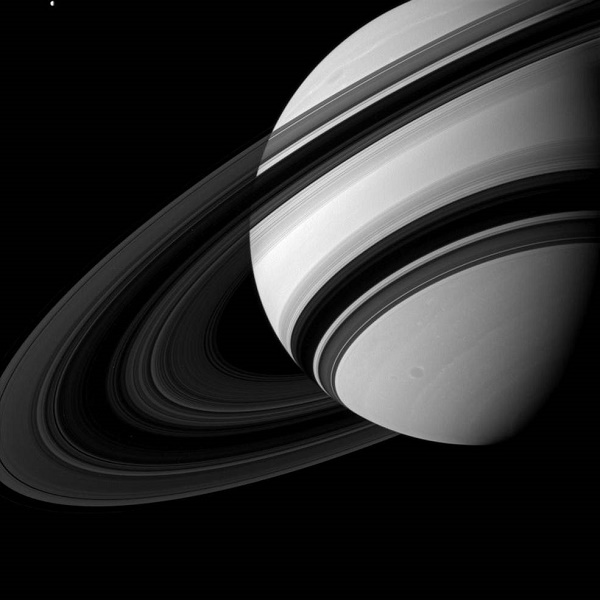By Ana Verayo, | February 05, 2016

Saturn's B ring is the most opaque of the main rings, appearing almost black in this Cassini image taken from the unlit side of the ringplane.
New results show that one of Saturn's rings, specifically the B ring is apparently not as dense as first thought, even if it is the most opaque of all the rings.
NASA reveals that this baffling finding is not only limited to the B ring as scientists discovered similar results from prior studies upon closer inspection of the gas giant's other rings. Data obtained from the Cassini spacecraft has been transmitting back to Earth as the probe has been around Saturn since 2004.
Like Us on Facebook
According to co-author of the study, Cassini investigator Phil Nicholson from Cornell University, appearances are certainly deceiving, as this phenomenon can be described as a foggy meadow turning out to be more opaque than a swimming pool, even when the pool is more solid and contains more water.
The team investigated the mass density of the ring via its density waves where these features appear due to particle movement that is triggered by gravity from Saturn and its moons as well. The wave structures can be determined by its density and the effect of gravity on it.
Astronomers now found out that the B ring is less denser than how it appears to be, but the mechanism behind it is still unknown. According to lead author of the study, Cassini scientist Matthew Hedman of the University of Idaho, this phenomenon can be linked to the size or density of individual particles or the structure of the rings.
Saturn's rings are made from billions of particles and pieces originating from moon remnants that were destroyed, or comets and asteroids that were broken apart by the colossal gravity of Saturn, according to NASA. Jupiter, Uranus and Neptune also possess ring systems however they are so faint that further studies are needed to determined the origin of these rings.
Using Cassini's composite infrared spectrometer, Saturn's B ring was investigated in past studies and now, astronomers looked at a bright star in between the rings using visible and infrared light, combining results from numerous observations, in order to detect these subtle ring waves than ever before.
Scientists have identified how dense these rings are along with its age which apparently are younger than the solar system's existence for 4.5 billion years.
NASA reveals that a smaller ring can evolve faster compared to a ring that has more material which can be darkened by dust from passing meteorites and other cosmic objects more faster. This means that since the B ring is less massive, it could also be relatively younger at a few hundred million years than a few billion years.
This new study is published in the journal Icarus.
-
Use of Coronavirus Pandemic Drones Raises Privacy Concerns: Drones Spread Fear, Local Officials Say

-
Coronavirus Hampers The Delivery Of Lockheed Martin F-35 Stealth Fighters For 2020

-
Instagram Speeds Up Plans to Add Account Memorialization Feature Due to COVID-19 Deaths

-
NASA: Perseverance Plans to Bring 'Mars Rock' to Earth in 2031

-
600 Dead And 3,000 In The Hospital as Iranians Believed Drinking High-Concentrations of Alcohol Can Cure The Coronavirus

-
600 Dead And 3,000 In The Hospital as Iranians Believed Drinking High-Concentrations of Alcohol Can Cure The Coronavirus

-
COVID-19: Doctors, Nurses Use Virtual Reality to Learn New Skills in Treating Coronavirus Patients







